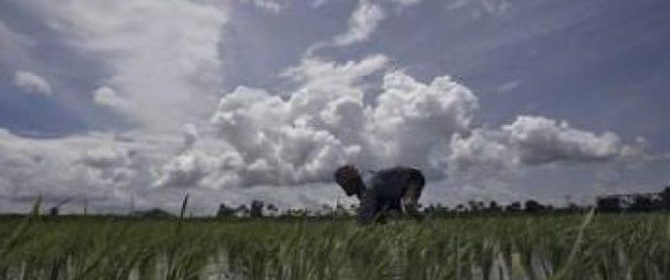IMD tweaks monsoon forecast to help agri sector plan better

With rainfall and monsoons becoming highly unpredictable partly due to climate change and partly due to usual changes in weather patterns, it is such innovations by IMD which will help in planning better, reports Sanjeeb Mukherjee.
The India meteorological department is starting a new experiment of disseminating month-wise Long Range Forecast (LRF) of the June-to-September period in the 2021 monsoon season.
The department has so far been coming out with three main LRFs in a monsoon.
The first is the initial forecast, usually announced around mid-April, and updated by the second-stage forecast somewhere in June.
The IMD provided region-wise forecasts for the four main zones of North-West, East and North-East, Central and Southern Peninsula in the second forecast and also updated the first, where needed.
Thereafter, the department also released the mid-season forecast in August for the last two months of the season.
However, what was lacking was a month-wise and region-wise Long Range Forecast for all the four monsoon months of June, July, August and September, with greater frequency and clarity, and coming closer to the start of the concerned monsoon month.
Also, the forecast for the main rainfed regions of the country, comprised of states such as Gujarat, Maharashtra, Madhya Pradesh, Rajasthan, Chhattisgarh, Odisha and Jharkhand wasn’t provided separately.
This left a huge gap in planning and administrative capabilities as farm output and the livelihood of millions were crucially dependent on the monsoon in the rainfed regions of the country.
Any slip-up in these states would have a devastating impact on the people as agriculture output suffered due to failure or excess of rains.
But, all this might change henceforth.
IMD and the new forecasting regime
From this year onwards, IMD will not only provide spatial and region-wise LRF for all the four months of the southwest monsoon season just days of the commencement of the month, but will also release a separate forecast for the rainfed regions of the country.
How did IMD achieve this and what all did it do to update and modernise its forecasting methodology?
According to IMD’s Director General Mrutyunjay Mohapatra, though the met department gave LRF for the country as a whole for several years, from time to time there has been demand for more regular Long Range Forecast with spatial distribution of rainfall.
However, this wasn’t possible as the numerical model being used by IMD to predict monsoon and rainfall since 2016 isn’t so advanced as to give such frequent forecasts.
But this year, under encouragement from the ministry of Earth sciences (MoES), particularly its reputed secretary Dr M Rajeevan, the met department embarked on a research mission to meet the call for increasing the frequency of LRF for the entire country with spatial distribution.
Rajeevan is one of the foremost weather scientists in India and a pioneer in monsoon-related research.
Under his guidance, Mohapatra says IMD decided to explore the possibility of using the numerical models available with it, along with other global models, to make such frequent predictions.
The IMD not only relied on its own climate forecasting model and coupled modelling models but also sought the help of other numerical forecasting techniques available globally as part of its long association with the World Meteorological Organization (WMO).
Mohapatra says IMD evaluated every global model based on its past years’ performance and finally arrived at a multi-model ensemble.
A multi-model ensemble is nothing but the output that is generated when 4-5 numerical models are fed with various types of statistical analysis of weather and climatological properties.
The output of all the global models was evaluated through a transparent process to ensure that the best one gets selected and once this long and tedious process was over.
IMD along with the ministry of Earth sciences and the global models, finally arrived at the LRF for each month of the four-month monsoon season.
Once this was ready, IMD decided to try giving an LRF for the core monsoon zone and for the first time came out with a forecast that shows normal rains in the critical rainfed regions of the country this year.
Critical importance
Though the entire exercise might look highly technical and routine, for several experts, IMD’s latest forecasts hold huge promise for the future.
So far, LRF was only available for the country as a whole, but not region-wise, for each month.
But with the latest innovation, month-wise region wise forecasting that will be available, will enable administrators and policy makers to alter their plans accordingly.
Moreover, last-minute changes in weather patterns can be adequately captured by the updated LRF.
“For example, August is one of the most critical months of the monsoon season and has a vital impact on the final yield of a host of kharif crops. If by July-end we can predict somewhat accurately as to the regions where the rains will be deficient or less that month, it will give time to farmers and people in the administration to take corrective measures,” Mohapatra said.
With rainfall and monsoons becoming highly unpredictable partly due to climate change and partly due to usual changes in weather patterns, it is innovations such as one made by IMD which will help in planning better.
Source: Read Full Article

